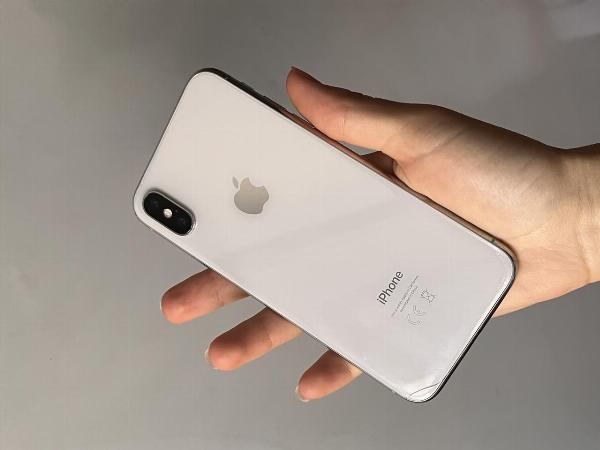Exploring the Legacy and Features of the iPhone X

Strong 8k brings an ultra-HD IPTV experience to your living room and your pocket.
Launched in November 2017, the Apple iPhone X marked the 10th anniversary of the iPhone and signaled a new era for Apple’s iconic smartphone line. With its groundbreaking design, advanced technology, and new features, the iPhone X set a new standard for what a smartphone could be. This article delves into the iPhone X’s key features, its lasting impact, and why it remains a significant device in the history of mobile technology.
Design and Build Quality
The iPhone X introduced a radical new design that departed from the traditional iPhone form factor. It featured an edge-to-edge display that covered almost the entire front of the device, eliminating the physical home button that had been a staple of previous iPhones. The body of the iPhone X is crafted from durable glass on both the front and back, framed by surgical-grade stainless steel, providing a premium feel and sturdy build quality.
The iPhone X’s dimensions and weight were carefully balanced to ensure a comfortable grip and ease of use. Despite its larger screen, it maintained a compact form factor that was not overly bulky. This combination of aesthetics and functionality made the iPhone X a design marvel that influenced future smartphone designs across the industry.
Display Technology: iPhone X
One of the most notable features of the Apple iPhone X is its Super Retina display. This 5.8-inch OLED display was the first of its kind for an iPhone, offering vibrant colors, deep blacks, and a high contrast ratio that brought images and videos to life. The OLED technology provided a significant improvement over the LCD screens used in previous models, resulting in a more immersive and visually stunning experience.
The edge-to-edge design, coupled with the introduction of the notch at the top of the screen, maximized the display area and set a new trend in smartphone design. The notch housed the TrueDepth camera system, essential for Face ID, and other sensors, seamlessly integrating them into the display without sacrificing screen real estate.
Camera System
The camera system of the iPhone X was another standout feature, offering a dual-lens setup with a 12MP wide-angle and telephoto lens. This configuration enabled high-quality photos with optical zoom and improved depth-of-field effects, particularly in Portrait mode. The addition of Portrait Lighting allowed users to apply professional-quality lighting effects to their portraits, enhancing the overall photography experience.
The iPhone X also excelled in video recording, supporting 4K video at 60fps and 1080p slow-motion video at 240fps. These capabilities made it a versatile tool for both casual photographers and professional content creators, delivering stunning visuals in a variety of settings.
Performance and Hardware
At the core of the Apple X is the A11 Bionic chip, a powerhouse of a processor that delivered exceptional performance and efficiency. With a six-core CPU, the Apple iPhones A11 Bionic was capable of handling demanding tasks with ease, from gaming and augmented reality applications to multitasking and everyday use. This chip also featured a neural engine designed specifically for machine learning, enhancing the iPhone X’s capabilities in areas such as facial recognition and photo processing.
The Apple X was available in two storage options, 64GB and 256GB, providing ample space for apps, photos, and media. The combination of powerful hardware and optimized software ensured that the X remained fast and responsive, even with intensive use.
Face ID and Security
The introduction of Face ID was a revolutionary step in smartphone security. Utilizing the TrueDepth camera system, Face ID provided secure and accurate facial recognition that replaced the traditional Touch ID fingerprint sensor. This technology used advanced algorithms and infrared sensors to create a detailed 3D map of the user’s face, ensuring that the device could only be unlocked by its owner.
Face ID also enabled secure authentication for Apple Pay and other apps, enhancing the overall security of the iPhone X. The removal of the home button and fingerprint sensor allowed for a cleaner design and more intuitive user experience, driven entirely by facial recognition technology.
Software and User Interface
The iPhone X launched with iOS 11, which introduced a host of new features and enhancements designed to take full advantage of the new hardware. One of the most significant changes was the shift to gesture-based navigation, replacing the traditional home button functionality. Swiping up from the bottom of the screen allowed users to return to the home screen, while swiping and holding opened the multitasking view. These gestures quickly became second nature and provided a seamless and intuitive user experience.
Subsequent iOS updates brought even more functionality and optimization to the iPhone X. Features such as Animoji and Memoji, which used the TrueDepth camera system to create animated emojis that mirrored the user’s facial expressions, added a fun and personal touch to messaging. Integration with the broader Apple ecosystem, including iCloud, Apple Music, and Apple Pay, ensured that the iPhone X worked harmoniously with other Apple devices and services.
Battery Life and Charging
Battery life has always been a critical factor for smartphone users, and the iPhone X delivered reliable performance in this area. Its battery was designed to provide up to 21 hours of talk time, 13 hours of internet use, and up to 60 hours of audio playback. Real-world usage typically saw the iPhone X lasting a full day on a single charge, thanks to the efficiency of the A11 Bionic chip and the optimization of iOS.
The iPhone X also introduced wireless charging to the iPhone lineup, compatible with Qi-standard chargers. This addition made charging more convenient, allowing users to simply place their device on a charging pad. Fast charging support was another welcomed feature, enabling the battery to reach 50% charge in just 30 minutes with a compatible charger, reducing downtime and keeping users connected.
Conclusion
The iPhone X marked a significant milestone in Apple’s history, setting a new standard for smartphone design and functionality. Its introduction of an edge-to-edge OLED display, the revolutionary Face ID system, and powerful performance capabilities showcased Apple’s commitment to innovation and excellence. The iPhone X’s legacy continues to influence the design and technology of subsequent iPhone models, underscoring its importance in the evolution of mobile devices.
For those considering the iPhone X, it remains a relevant and capable device even several years after its release. Its advanced features, coupled with ongoing software updates from Apple, ensure that it continues to provide a high-quality user experience. Whether you are a long-time Apple enthusiast or a new user, the iPhone X offers a comprehensive and future-proof package that stands the test of time.
In summary, the iPhone X is more than just a smartphone; it is a testament to Apple’s vision and innovation, a device that pushed the boundaries of what a phone could be and set the stage for the future of mobile technology.
Note: IndiBlogHub features both user-submitted and editorial content. We do not verify third-party contributions. Read our Disclaimer and Privacy Policyfor details.


